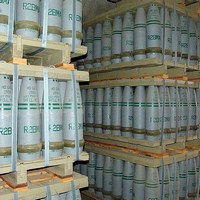That Russia and NATO are developing plans to conduct a rare joint maritime show of force to reaffirm their commitment to the Syrian chemical weapons elimination process is a good development. According to Reuters, Russian and U.S. warships will jointly escort a U.S. vessel, the USS Cape Ray, which has been re-equipped to destroy Syria's most dangerous chemical weapons. Russian and NATO experts are currently developing a unified command structure, possible rules of engagement and other details within the framework of the NATO-Russia Council, the most important alliance structure linking the parties.
The escort mission would be largely symbolic since the Cape Ray is not facing any military threat; at worst, the vessel could face dangers from inclement weather or technical mishap. But the symbolism would be potent. Such a joint mission could re-energize the stalled elimination process in Syria and provide a basis for renewed Russian-NATO cooperation in other areas.
Last September, Russia and the United States negotiated a plan to eliminate Syria’s chemical weapons, averting an impending U.S. military strike against the government of Syrian President Bashar al-Assad after a chemical weapons strike widely attributed to his forces killed more than a thousand Syrian civilians. The U.N. Security Council subsequently unanimously adopted Resolution 2118 based on the Russia-U.S. deal, mandating the complete destruction of Syria's chemical weapons by mid-2014. Since then, Russia, NATO countries and others have contributed money, equipment and personnel to the operation.

